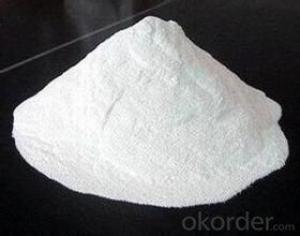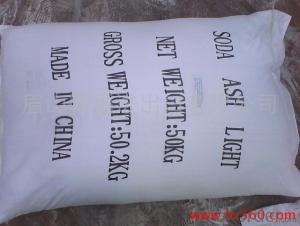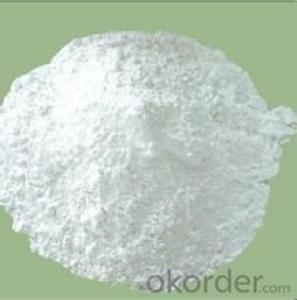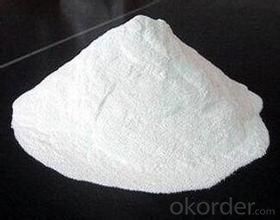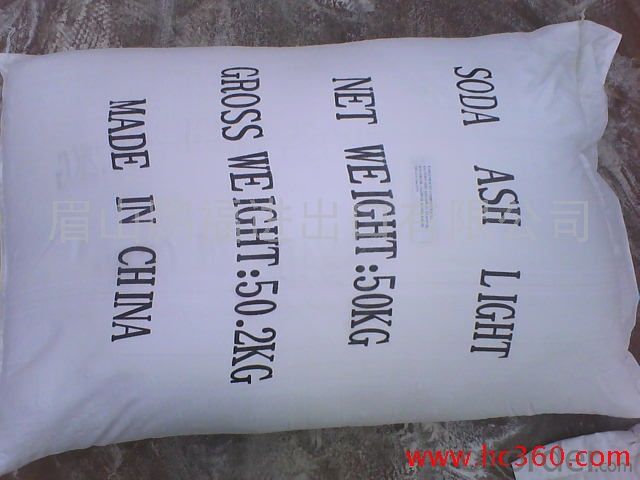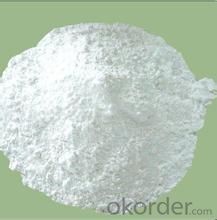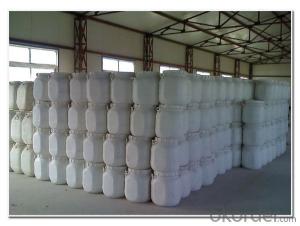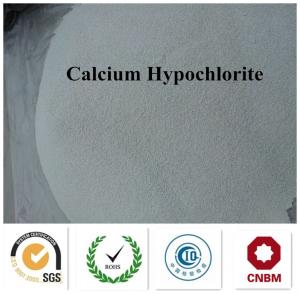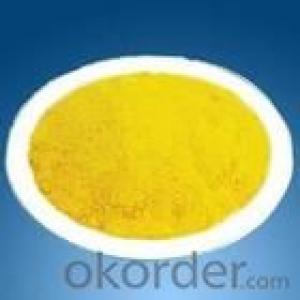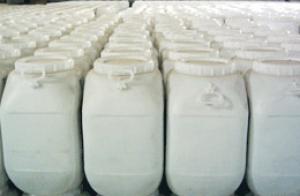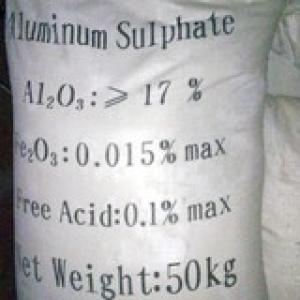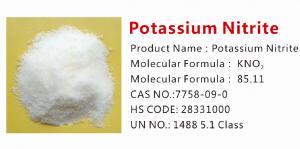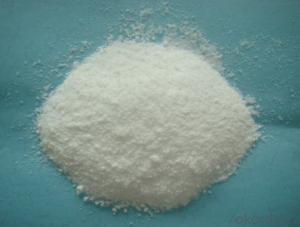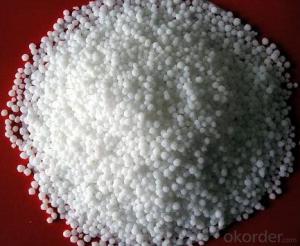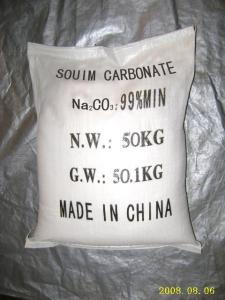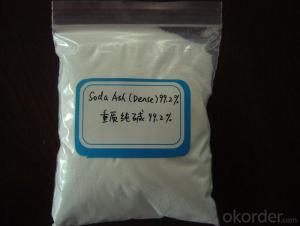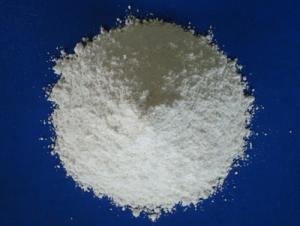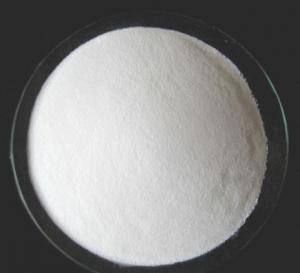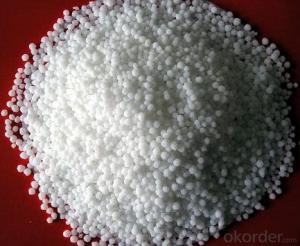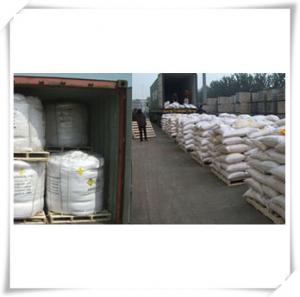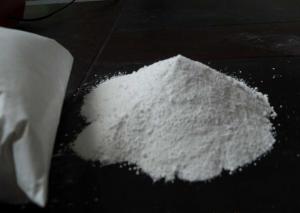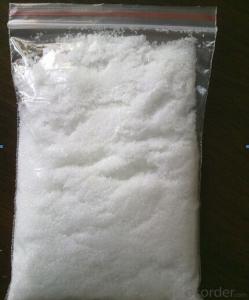Soda Ash with Best Quality with the Lower Price
- Loading Port:
- China main port
- Payment Terms:
- TT or LC
- Min Order Qty:
- 21 m.t.
- Supply Capability:
- 3000 m.t./month
OKorder Service Pledge
OKorder Financial Service
You Might Also Like
1.Structure of Soda Ash Description:
Chemical name: sodium carbonate
Molecular Formula: Na2CO3
Appearance: white crystalline powder
Properties: soluble in water, alkaline aqueous solution significantly, and release heat, easy to deliquescence; react with the acid salt generated.
Uses: soda is the most important one of chemical raw materials widely used in chemical, glass, metallurgy, paper making, printing and dyeing, synthetic detergent, petrochemical, food, medicine and health industry, the amount of large, important in the national economy status.
Packaging & Shipping
packaging is only 50kg bag,jumbo bag....
Shipping: can load 25mt /20FCL
2.Main Features of Soda Ash:
1)High Quality
2)High Purity
3)Lower Price
4)Well Package
5)Supply by the biggest factory in China
6)Stable producing ability
7)Fast Shipment
3.Soda Ash Images



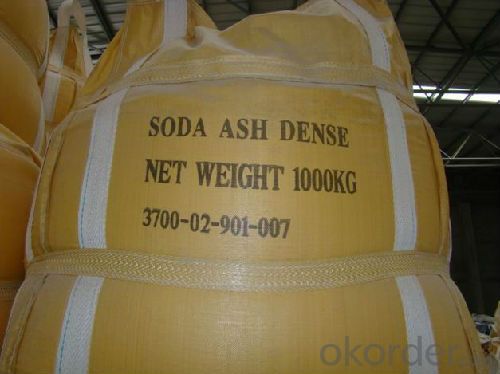
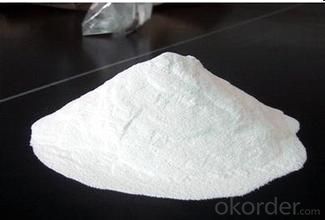
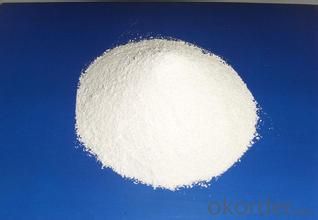
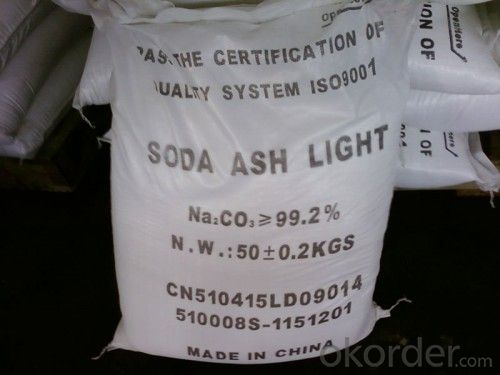
4.Soda Ash Specification
EXAMING ITEM | NUMBER | |
STANDARD | MEASURED | |
TOTAL ALKALI (BE ACCOUNTED WITH THE Na2CO3 ) %≥ | 98.80 | 99.30 |
CHLORIDE (BE ACCOUNTED WITH THE NaCl)%≤ | 0.90 | 0.53 |
IRON (BE ACCOUNTED WITH THE Fe)%≤ | 0.0060 | 0.003 |
WATER INSOLUBLE ≤ | 0.100 | 0.029 |
BULK DENSITY g/ml ≥ | 0.90 | 1.04 |
GRANULES, RESIDUE ON SIEVE(180μm) %≥ | 65.00 | 69 |
OUTLOOKING | WHITE SMALL GRAIN | WHITE SMALL GRAIN |
5.FAQ
1)How many tons does your factory can supply each moth?
30000tons/month
2)How to quarantee the quality of the products?
you can arrange SGS&BV or other quality inspection.
3)How many days you need to pepare the cargo after we made the order?
within 30 days.
- Q: TRUE OR FALSE: the addition of salts to water will always increase the surface tension of water. explain.?
- False. Although inorganic salts will increase surface tension of the water by increasing the attractive forces between water molecules on the surface, organic salts will typically (always?) decrease the surface tension.
- Q: The effect of inorganic salt medium and the difference with enrichment medium
- The enrichment of nutrients is based on the basis of nutrition based on some kind of nutrient-rich substances for the target cells, the purpose is to increase the number of target cells, so that the formation of growth advantages, so as to achieve the purpose of separation, such as we have to be separated Pseudomonas aeruginosa, this bacteria particularly like blood, so you can add blood in the medium, so that the formation of growth advantages of this bacteria.
- Q: Inorganic salt of the inorganic salt function
- Although inorganic salts in the cell content is relatively small, but there are many important role. Ca2 + is the animal bone and teeth (containing CaCO3) composition, and blood coagulation and muscle contraction has a regulatory role, if the content is too low, the animal will appear muscle twitch. K + is a variety of enzyme activator, for the plant starch and protein synthesis and animal nerve impulse conduction and muscle contraction also plays an important role. Fe is a component of hemoglobin and cytochrome, and iron-containing enzymes are indispensable when chlorophyll is formed in plants. Another example is Na + for animal heart beat, nerve excitement is indispensable. The various inorganic salts dissolved in the cells have a certain total concentration, such as human body fluid concentration of 0.9%, frogs of 0.65%, which for maintaining cell osmotic pressure, so that cells maintain a certain shape has an important role, too high or Too low will lead to cell due to water or dehydration to change the cell morphology. There are also a number of buffering systems in the body, which are a group which has a neutralizing effect on the added acid or base so that the pH does not change significantly and therefore plays an important role in maintaining the acid-base balance of the cells.
- Q: Why can quaternary ammonium salts catalyze the heterogeneous reaction between water-soluble inorganic salts and organic compounds
- Quaternary ammonium salts have the characteristics of surfactants, with the water phase of the nucleophile in the composition of the ion pair, into the organic phase, thereby promoting the heterogeneous reaction faster 6224
- Q: Why is the residue after burning known as coarse ash? And inorganic salt content What is the difference
- GB / T5009.4-2003 "Determination of ash in food" (a) the principle of a certain amount of samples after carbonization into the high temperature furnace burning, the organic matter is oxidized decomposition to carbon dioxide, nitrogen oxides and Water and other forms of escape, and inorganic substances to sulfate, phosphate, carbonate, chloride and other inorganic salts and metal oxide in the form of residual
- Q: The presence of inorganic salts
- The presence of inorganic salts is mostly present in the ionic state in a small number of compounds
- Q: What fruit contains more minerals?
- Persimmon contains a lot of carbohydrates, per 100 grams of persimmon containing 10.8 grams, mainly sucrose, glucose and fructose, which is why we feel very sweet persimmon persimmon in the other nutrients are not only contain a small amount of fat , Protein, calcium, phosphorus, iron and vitamin C. In addition, persimmon is rich in pectin, it is a water-soluble dietary fiber, a good laxative effect, for correcting constipation, to maintain normal intestinal flora Growth and so have a good effect.
- Q: Octopus why the lack of boron-containing inorganic salts can cause rape to flow only without fruit
- When the boron deficiency occurs, pollen tube germination is affected and poor fertilization leads to seed formation.
- Q: What foods contain zinc-containing inorganic salts
- 2nd place: pecan (cooked) [walnut] (12.59 / 30g / 100g)
- Q: Think about the physical and chemical properties of salt and sugar. What properties do these substances have in common? Describe which properties you could use to distinguish between them. What properties and units would you use to describe their physical and chemical characteristics? List as many as you can.
- I believe it's Physical, most of the times such changes are physical, melting point, sublimation, evaporation, etc.
Send your message to us
Soda Ash with Best Quality with the Lower Price
- Loading Port:
- China main port
- Payment Terms:
- TT or LC
- Min Order Qty:
- 21 m.t.
- Supply Capability:
- 3000 m.t./month
OKorder Service Pledge
OKorder Financial Service
Similar products
Hot products
Hot Searches
